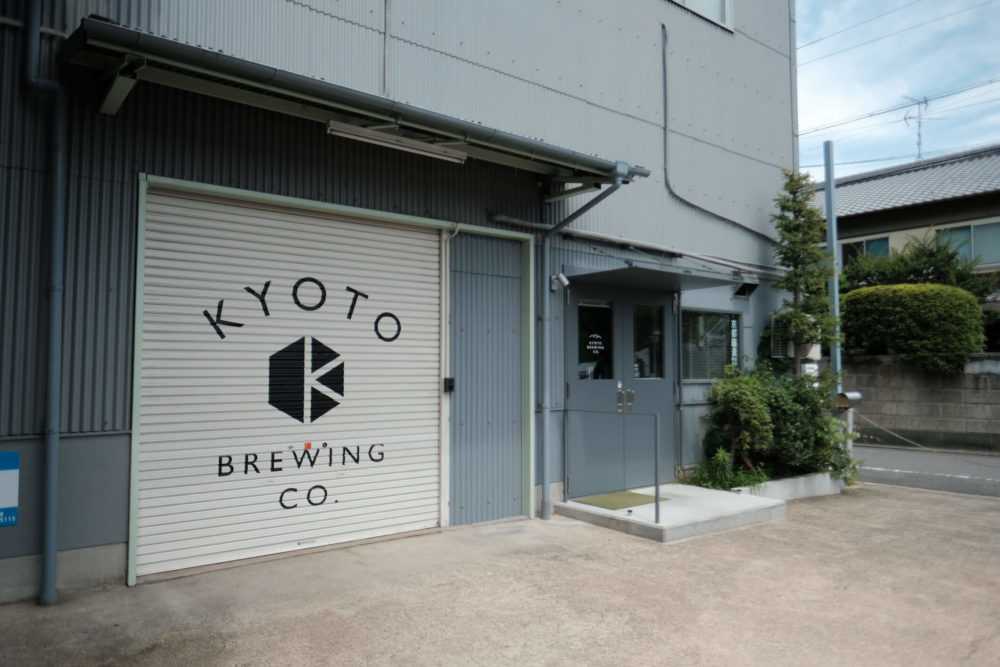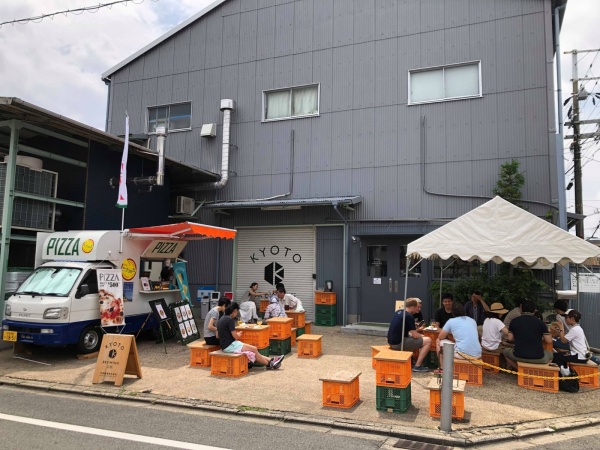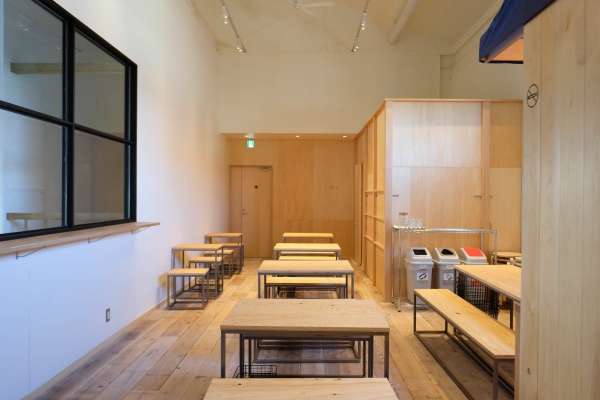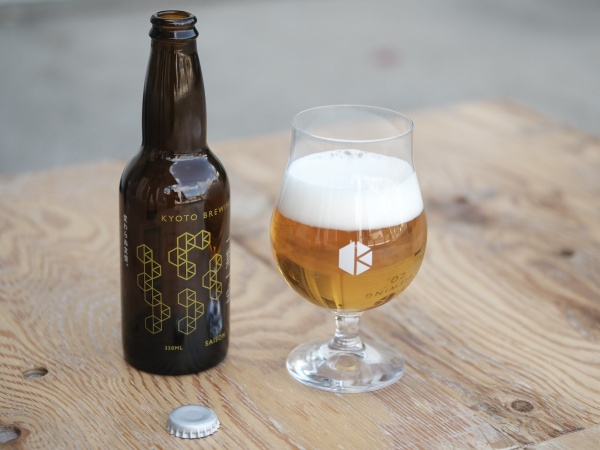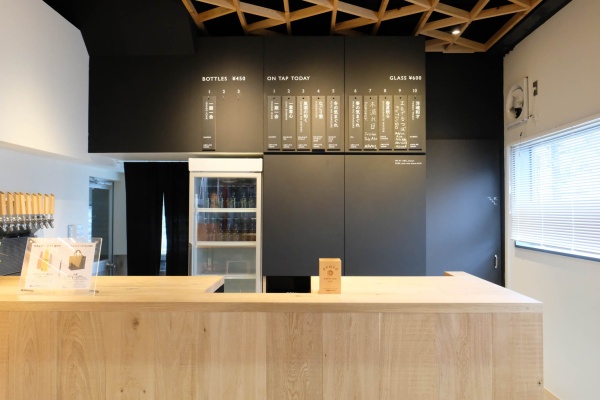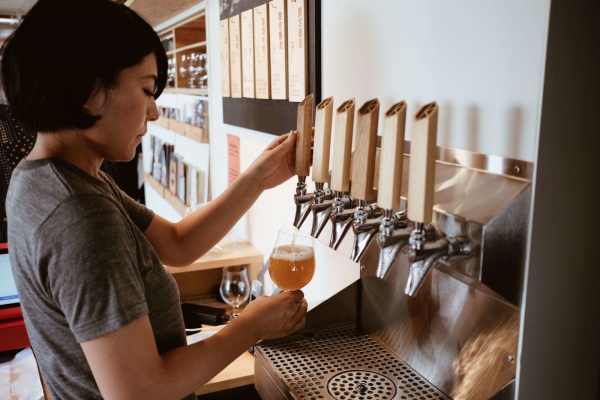01
01

推薦網站
From "I don't know." to "FUN". ANTENNA is a mixed culture magazine based in Kyoto.
推薦網站

From "I don't know." to "FUN". ANTENNA is a mixed culture magazine based in Kyoto.
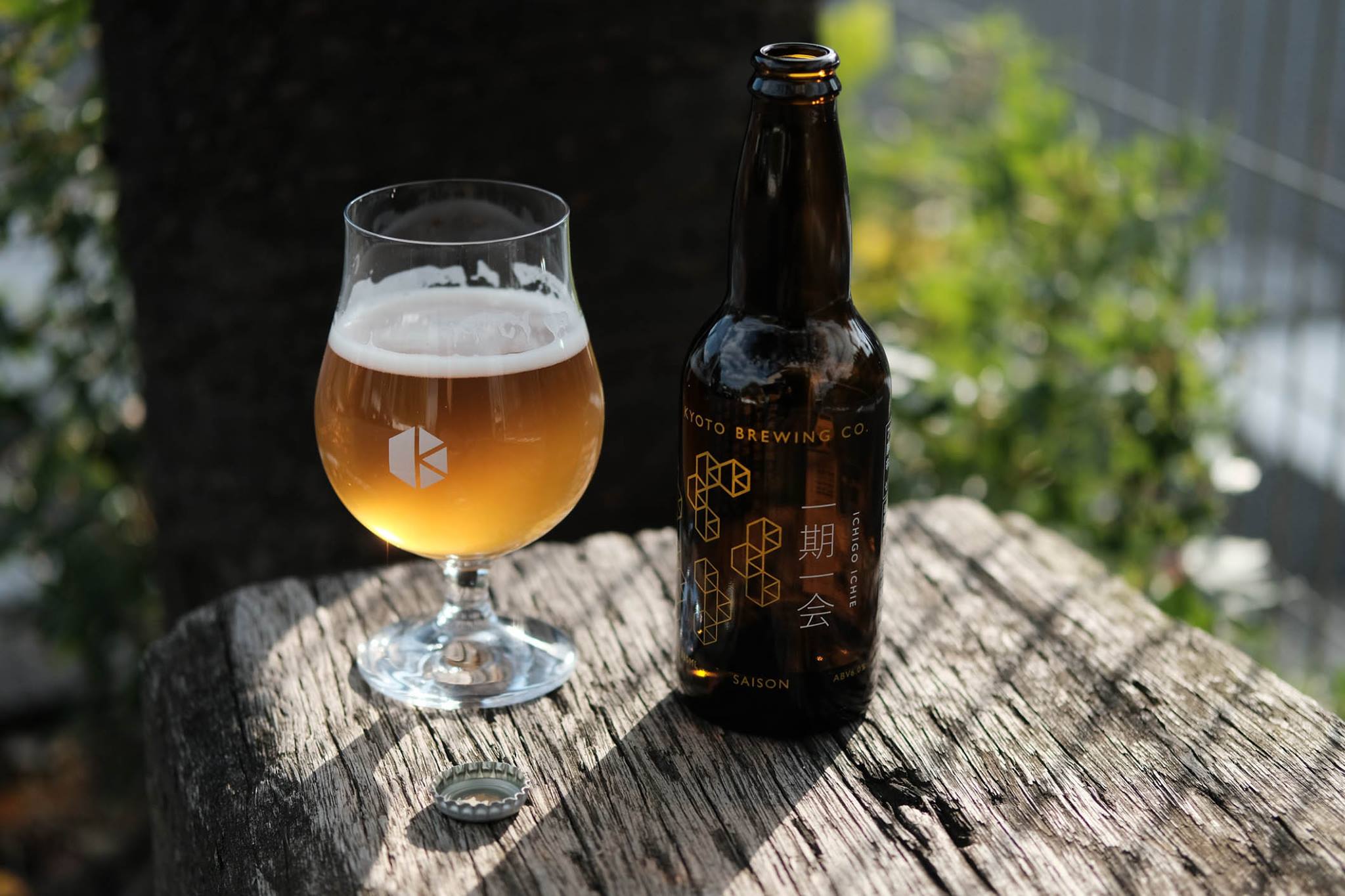
interviewer:
This was covered on your website, but can you tell us again the reason why you opened a brewery in Kyoto?
Chris:
At first, it was simple. I’ve been living in Kyoto for 13 years. I was doing administrative work at Ritsumeikan University, but I wanted to turn my hobby of brewing beer into a job. I wanted to do what I love in the city that I love. Kyoto is a perfect balance between urban and rural. I spoke with the other two (co-founders Paul and Ben) and researched locations, and found Kyoto’s spirit of craftsmanship to be very appealing. Brewing beer is a craft, after all. What we make may be different from the other craftspeople, but we have the same spirit of creation, so I felt we could get used to Kyoto.
interviewer:
Why did you choose this specific location on the south side of Kyoto?
Chris:
We didn’t have strong preferences for the location. Out of the 20 or so locations we looked at, we chose this one because it had the best layout for a brewery, and it was close to town.
interviewer:
You mentioned you’ve been living in Kyoto for 13 years. What are your favorite places in Kyoto?
Chris:
I like mountain climbing, so Mt. Hiei and Kiyotaki are great, although I’ve been too busy to visit lately. I also like going to Kitano-tenmangu Shrine and head to the Odoi (an earthen mound) in the grounds of the shrine, which is near my home, to sit under the zelkova trees to drink beer. (Laughs)
interviewer:
That sounds lovely! (Laughs) So you still live in the area.
Chris:
I used to commute by bicycle because we started early in the morning and finished late at night. These days, now that the hours have settled down, I take an express bus that takes me here directly.
interviewer:
Do you work early in the morning?
Chris:
I come in at around seven when we have prep, and around nine on normal days. I finish at about seven or eight at night. At the beginning, we were prepping constantly, and I was often here until midnight. (Laughs)
interviewer:
Prepping must be a lot of work.
Chris:
We use 400 kilograms of malt each time. Here (the malt pulverization space on the second floor), we have it set up so we can keep 1,000 kg + 1,000 kg of malt. We use the same lift that was used when the building was a lumber mill, and we bring the malt to this room when we receive a delivery.
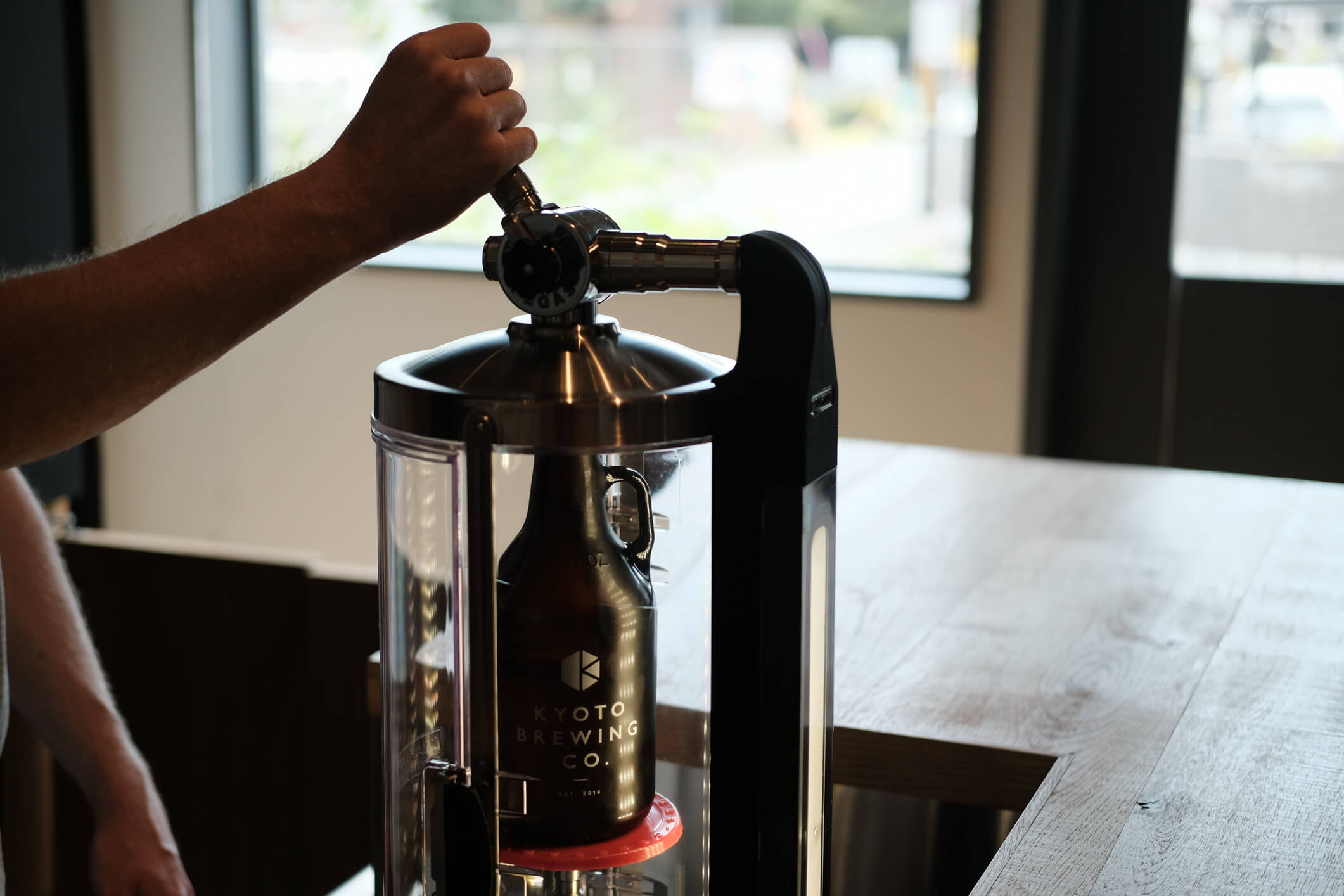
interviewer:
So, you’ve kept some of the old installations that were here previously. Where do you source your materials from?
Chris:
The malt comes from Germany, Belgium, and the U.K. Japanese malt is too expensive. (Laughs) The hops are from the U.S. and Europe. In Japan, they used to only grow hops for major companies. We started buying hops that have been produced in Yosano Town , Kyoto since about four years ago, which we use a little bit of each year. The amount we use is still small, but if all goes well, we will be able to make our beer with Kyoto hops.
interviewer:
It sounds like there aren’t a lot of materials to make beer with in Japan.
Chris:
It’s true. Major producers of beer are required to use a certain percentage of materials produced in Japan, so they have their own farms. On the other hand, small breweries tend to use imported products.
interviewer:
Tourist locations often have local beers. Are those often produced by major producers?
Chris:
Major producers are not usually involved. For this reason, I believe their materials tend to be imported from overseas. In most cases, only the water is locally sourced. This is one of the reasons that many breweries that are particular about their flavor have recently begun to use the term “craft beer” instead of “local beer.”
interviewer:
I didn’t realize that was the reason for the rise of the term “craft beer.” How many people are currently working at the Kyoto Brewing Company?
Chris:
I make the beer with three assistant brewers. Including sales and accounting, we have a total of eleven full-time employees. We also employ a number of part-time staff in the taproom.
interviewer:
So, you hire new employees as well?
Chris:
We’ve received quite a number of inquiries. There were two craft beer booms in Japan. The first was in the 1990s that led to a sudden spike in sales, but the beer didn’t taste that great and it didn’t go well. (Laughs) We are currently experiencing the second boom, and we are seeing breweries being opened by people who love beer and are particular about the taste. I believe this is the reason we receive so many inquiries.
interviewer:
Is craft beer popular overseas?
Chris:
Craft beer is said to have originated in the U.S., where it’s been produced since the 70s. In recent years, there’s been a sudden increase, and the U.S. share is about 14%. On the other hand, Japan’s share is only 0.1%.
interviewer:
Do breweries have relationships with each other?
Chris:
In the U.S., they do. They have relationships in Japan, too, and other breweries will teach you things if your relationship develops. But a cultural tendency not to teach outsiders still exists for some breweries in Japan.
interviewer:
How are your relationships with other breweries personally?
Chris:
There are breweries that I liked since I was brewing beer as a hobby. I built relationships with them by greeting them at events and volunteering for them at the Craft Beer Fest Kyoto that’s held once a year. When it came time to start our own brewery, it was reassuring to have people that I could consult.
interviewer:
I suppose it helps that you’re passionate about it. What do you think is the most important thing about brewing beer?
Chris:
I’ve been asked this before, and I didn’t have a good answer. (Laughs) The most important thing about running a brewery is being able to make the kind of beer that we like to drink. This is possible because we are able to judge whether our beer tastes good or not. We select our yeast and hops carefully. We mainly use Belgian yeast and American hops with a punch. You might think that I’m the one who makes the beer, but in reality, I only make the wort. In the end, it’s the yeast that makes the beer. Creating an environment where the yeast can thrive is my job, and that’s what’s challenging and interesting.
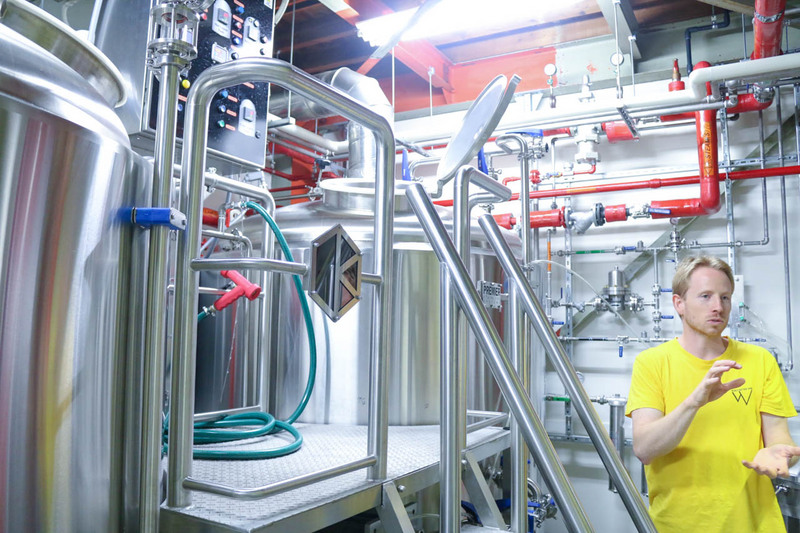
interviewer:
I find the process of brewing beer fascinating. What made you decide to open a taproom?
Chris:
Brewers want to see the faces of the people who are drinking their beer, and drinkers want to see the faces of those who are brewing their beer. Some major producers have taprooms, but I don’t think they are enjoyable enough. Before we opened our taproom, events were the only times we could see people drinking our beers. I’m glad we now have a place where we can watch people enjoy our beers and hear their impressions directly from them. I believe it’s an enjoyable experience for the customers as well.
interviewer:
I’d like to conclude by asking you about your goals for the future.
Chris:
We want to produce a stable supply of high-quality beer. We’re confident about our quality now, but our business isn’t stable yet. We want to be a brewery where customers will come in and tell us, “Your beer is always interesting and tasty.”
- 交通方式
- 25-1 Nishikujo Takahatacho Minami-ku, Kyoto-shi, Kyoto-fu 601-8446
- 電話
- +81-75-574-7820
- 官網
- https://kyotobrewing.com/en
閱讀更多連結網站

語言: Japanese
https://kyoto-antenna.com/From "I don't know." to "FUN". ANTENNA is a mixed culture magazine based in Kyoto.


